Charlie Hoehn is the author of Play It Away, which Tony Robbins called “The cure to your stress!” With 15 years in the publishing world, Charlie works with the top 0.1% of nonfiction authors to elevate their brands, books, and businesses. Charlie was Tim Ferriss’ Director of Special Projects, helping him launch The 4-Hour Body to #1 on the New York Times list, #1 on Barnes & Noble, and #1 on Amazon.
In today’s show, Charlie shares his superhero origin story, including being an intern for Seth Godin, connecting with Ramit Sethi, and helping market his book to Amazon’s bestseller list. He talks about his innovative approach to book promotion. With the launch of Ramit’s first book, they made history, utilizing live streams to engage audiences in a way no one had before. It wasn’t always smooth sailing; they ran afoul of the law with their promotional giveaway, but they learned and adapted on the fly.
From Jordan Peterson’s 12 Rules for Life to Charlie’s own insightful strategies, we explore what it takes to be part of the 0.003% of authors who break through to phenomenal sales. Tune in for an enlightening conversation and a blueprint for success. Without any further ado, on with the show!
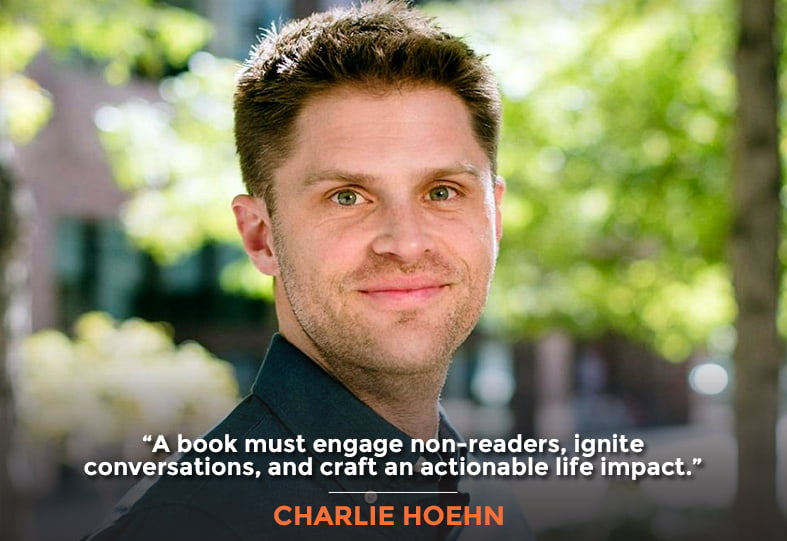
In This Episode
- [02:28] Stephan asks Charlie Hoehn, the best-selling author of Play It Away, how he started his superhero origin story.
- [11:28] Charlie recalls being an intern for Seth Godin and how it started.
- [15:05] Charlie shares how he ended up meeting Ryan Holiday.
- [19:43] A major strategy to reach non-readers.
- [23:53] Charlie discusses nine steps to produce a book that will sell millions of copies.
- [27:23] What are the components of a remarkable book?
- [37:58] The importance of having a good story as an author.
- [47:28] Charlie’s nugget of wisdom for this episode.
- [52:55] Charlie emphasizes the best marketing move to create a timeless artifact and spread the information freely through a book.
Charlie, it’s so great to have you on the show.
I love talking with you, Stephan. Thanks for having me, man.
First of all, please share your superhero origin story with our listeners. How did you end up with such a powerful network, making such a big difference in the world and with huge things yet to come?
It started in 2008, right before the recession hit. I was planning on leading the typical college graduate life. That was the year I graduated. I was like, “I’m just going to take a job at this ad agency I’d interned for. They liked me, so I’ll be able to get a starting salary of at least $40,000 a year, maybe $50,000. And I’ll work on ads with people I like and whatnot.”
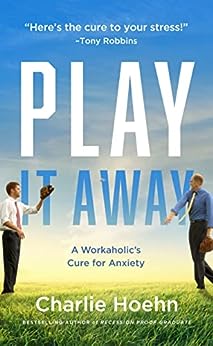
Of course, the recession hit. That agency started laying people off like crazy and eventually, even shut down for a while. That plan didn’t work, so I spent months applying to jobs the traditional way of getting on a job board, sending in a resume and a cover letter, rinse and repeat. It didn’t have one-click applications, so I applied for a hundred jobs for a few months.
I remember checking in and realizing that of all those applications, I’d only heard back from two. One was a pyramid scheme, and the other was a manual labor company, which was nothing wrong with that, but I didn’t need to go to college to get that job. That wasn’t in the game plan. I took that job for a little bit. It was just a bunch of people tatted up, chainsmokers. It was not the type of work in a culture I envisioned myself.
It didn’t feed your soul.
No, not exactly. I felt like no one liked each other either. I remember laying on the ground one night in my bathroom in my parents’ house and pulling my hair out because this is what my parents and professors’ advice gave me. I’d spent three or four hours in a resume optimization workshop, and none of this stuff worked.
It was bizarre to me. I spent 17 years in this system of increasing the level, and here’s the real world. It just didn’t work.
I remember thinking, “I’m just going to do what excites me, what I think would be exciting. I’m going to do it for free. I won’t ask for a paycheck because no one’s giving me a paycheck anyway.”
That is one of the big hurdles to working with me. “Do we have to put this guy on payroll right now during the recession?” Competing against people 15 years older than me who are willing to take a pay cut at my rate to get the job, I’m not going to beat them.
In your marketing, you should strive to create the best possible product. Your product should uniquely address the pain points of readers in a high quality manner. Share on XI did a virtual internship with Seth Godin at the time. He had opened that up to hundreds of people who’d applied. I thought, “If I stick with this, I’ll be one of the few left at the end of this,” so I stuck with that. There ended up being about a dozen of us who stuck with it throughout that time. That gave me a little bit of a credibility boost.
I started reaching out to authors that were doing interesting work. Ramit Sethi, who ran the blog, I Will Teach You To Be Rich, was working on his first book of the same name. I reached out, and he had happened to do an internship with Seth Godin before I did, so we connected on that front.
I said, “Ramit, you’re great on video, but you never do it. I saw some videos of you. You’re a professional speaker, and you don’t do video. Why don’t you give that a try? I’ll edit all your videos, I’ll kickstart your YouTube channel, and we’ll test it out.”
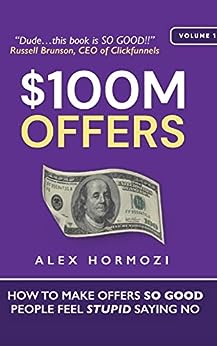
I sent him a sample of my work, “Here’s a video I made.” He was like, “Wow, that’s great. Let’s do it.” We started doing some videos together. In the first few, he got a lot of traction, and then he invited me to help him with the marketing strategy for his book.
I helped him lead the charge in marketing his book, which hit number one overall on Amazon’s bestseller list. It beat out the Twilight series, which was a huge deal then. It was like, “Wow, we really did something special here.” We created this innovative strategy that hadn’t been done at the time.
Those two things were my first real footholds, and then I leveraged those into, “Hey, I’m going to reach out to Tucker Max and do some marketing work for free for him too.” He ended up inviting me on to his nationwide movie tour. I went around as one of his two videographers, edited videos for every stop, and did promotions for the movie at every visit.
Quickly, I gained this reputation as a guy who could get things done and was fairly savvy with marketing. I had Ramit, Tucker, and one other person all independently recommend me to Tim Ferriss, saying, “Hey, this is a guy you should work with.” I started doing some free work for Tim.
He quickly was like, “Let’s pay you. We’ll do $25 an hour.” I was doing basic stuff at first, but I was looking proactively for areas where it could help his readers or enrich what he was already doing.
It ended up with Tim offering me a full-time role. I became his first full-time employee and eventually got promoted to this title we made up called Director of Special Projects, where I was just doing many different things and helping him with his book, brand, and business. I became known as a “guy behind the scenes.”
I wrote a book called Recession Proof Graduate that said, “Here’s the free work strategy.” I saw somebody write about this this morning, a guy named Jack Butcher. He calls it the permissionless apprentice strategy, which I called the free work strategy.
If you create value, you’ll eventually get paid.
The only difference between that and an internship or a traditional apprenticeship is you just say, “I like what this person or company is doing. I’m going to act as an advocate or a behind-the-scenes brand ambassador, and I’m going to enhance what they’re doing. I won’t wait for somebody to pay me or tell me what to do. I’m just going to do it, and I’m going to do it in a way that can only positively affect their brand.”
I just kept doing that, and it was interesting. One of the most fascinating conversations to me was with Michael Ovitz, the founder of the CAA. It’s the biggest talent agency in Hollywood, and then he was the CEO of Walt Disney for a while. Michael Ovitz does not have a great reputation, but he’s an impressive guy. What he has accomplished is remarkable.
He told me, “I got my start the same way of doing this permissionless apprentice thing and finding ways to create value for others. When I kept learning about things throughout history like ‘Leonardo da Vinci did this’ or ‘Warren Buffett did this.’ It just became a recurring thing that stood out to me. I’ve modified how I think about it now.”
You’re aiming to get paid to play. You’re starting by removing the financial motivation and starting with intrinsic motivation. What is going to be fun and exciting for you? Do it. See how it goes. If you create value, they’ll pay you eventually. That’s been my message and origin story on how I got started.
That’s awesome. Congratulations on all your success. You mentioned you were an intern for Seth Godin. How did that come about?
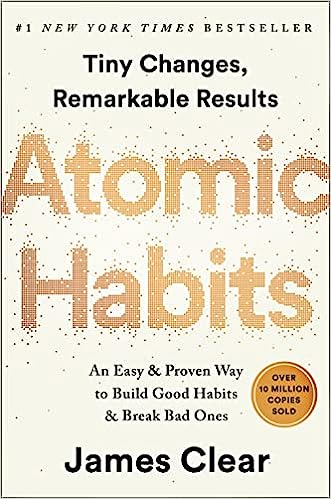
Seth had posted on his blog. I was a big fan of his blog. He’s the reason I went into marketing. I almost quit marketing because I was like, “This is just hacking products at people and manipulating them.” I’m not into it, but Seth changed my mind.
Seth wrote on his blog that he was looking for an intern, so I went about creating this application that, in retrospect, was very cringy. It’s way over the top and gimmicky, not substantive. I got rejected. He had four seats to come to New York and work with him in person.
For free?
I don’t know if it was. I think it was for free. I know the people who got those seats, and they were like, “It was awesome.” I did not get one of those seats, but he said, “I got so many applications and was impressed by so much. This was a hard thing to pick. It won’t be quite the same, but anybody who wants to do a virtual internship, you’re invited.”
It was something like a Slack channel, a Ning community, or something at the time. I joined, and I remember there were hundreds and hundreds of active people in it, all of whom were like, “This is going to be great. We’re going to be virtual interns.” I remember thinking, “There’s no way they’ll all stick with this. It will not be rewarding at some point, and they’ll drop off.”
I stuck with it every day for the summer, did some work each day, and tried to collaborate with others. By the end of the summer, only twelve of us were still active. Seth messaged all of us and said, “I appreciate that you guys stuck with this. I’d like to promote you on my blog.”
We all compiled a one-pager in a PDF, and he posted it on his blog. He said, “These are the best interns I worked with this summer.” A lot of companies reached out. I ended up working with one, which was called Kyjen, which is now known as Outward Hound. It’s one of the biggest dog toy companies in the world. I did some marketing with them.
I wanted a little stick to motivate me, I wanted to have some pressure.
What was funny was my parents at the time. I had promised them that if nothing worked for me, I’d work as a landman for an oil company, which is $100,000 yearly. My dad is in the oil and gas industry. He was like, “All right, that’ll pay well. I can help you get that job pretty quick.”
How would you promise that?
Because I wanted a little stick to motivate me, I wanted to have some pressure.
Okay. You did that for you, not for them.
I did a burning-the-bridges move for me. I know it’ll be soul-crushing, but I can also do it and get under my feet financially. What was funny was while I was doing this, my parents had no idea who Seth Godin, Tim Ferriss, and all these guys were. They’re like, “These are weird internet people. Good luck.”
One of their friends in the marketing space was like, “Your son did an internship with Seth Godin,” after he posted it to his blog. They said, “Wow, we didn’t know he was reputable. This is very great.” “Yes, Seth Godin’s a huge deal in the marketing world.”
That’s awesome. Didn’t Ryan Holiday take this kind of approach as a permissionless apprentice? How did you end up meeting Ryan?
It’s funny. I was emailing him this morning.
Nothing’s random, of course.
To our knowledge, no one had ever done a live stream before to promote a book. We did that in tandem with a huge giveaway.
Right, not random at all. Ryan and I started our careers very similarly. He’s just gone to unbelievable heights. Ryan did the same strategy. He wanted to work with Robert Greene. I can’t remember if he started working with Tucker Max. I think Tucker introduced him to Robert.
That’s where he learned the art of writing a best-selling book. He helped Robert as his researcher and his editor. We took a very similar approach. He worked with Robert; I worked with Tim. Our circles overlapped many times, and Ben Casnocha did as well.
Ryan’s very famous. Ben is not quite as much, but Ben took the same approach working with Reid Hoffman. He became a co-writer on one or two of Reid’s books, such as The Startup of You. Ben and I have known each other longer than Ryan and have taken the same approach.
Yeah, I remember Ryan was at Tim Ferriss’ event. He was a speaker, right?
Yeah. He ended up being the first speaker. We invited him as a guest, but Kevin Rose couldn’t attend. He would be our first speaker, and then he had to cancel, so we invited Ryan and Tucker to speak.
Wow, quite a way to pivot, and then you’re thrown a curveball like that.
They helped us.
Let’s circle back to how you helped Ramit with his first book. You teased us with an innovative strategy that you didn’t elaborate on. What was so innovative back then?
To our knowledge, no one had ever done a live stream before to promote a book. We did that in tandem with a huge giveaway. Enough time has passed now that I can reveal.
By the way, I’m super proud of Ramit. He’s now the host of a hit show on Netflix, How To Get Rich. It’s cool to see him go from where he was to now.
What happened was Ramit partnered up with mint.com or something similar. He was given a bunch of money, like $10,000 or something. We also had some money. He had money from the publisher toward Kindle and stuff, which were brand new then.
He gave away a Kindle or a $1000 check for somebody’s savings account every hour. We didn’t know that you cannot tie a promotional giveaway like that to book purchases. It is against the law to make it conditional.
You had a sweepstakes.
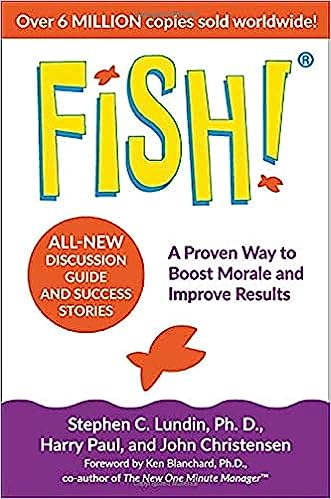
Exactly. But it works well. That’s why it’s illegal. Anyway, we didn’t know that. Somebody started messaging us, saying, “Hey, you can’t do this.” We’re like, “Oh, no.” It was fascinating.
Ramit asked me, “You put together what you think a good marketing plan is to launch this book, and I’ll put together a good marketing plan. We’ll circle up, and we’ll see which ones overlap.” We had a ton of overlap. We combined our ideas and said, “All right, let’s move this forward.” I must reflect on the plan, but I remember that part. We were like, “Man, this is working,” and realizing after, “Oh, that’s against the law.”
Awesome. You have an incredible blueprint plan for success. If you have a nonfiction book and want to sell a million copies, which is very hard, it’s rarer than a hen’s teeth to get a million copies of your book out there in public. But with a category Amazon bestseller, you can achieve easily through a buyers group and some gray hat strategies.
What about selling a million copies of a nonfiction book that is so elusive or difficult that it’s so rare? What’s your blueprint look like?
Part of the reason it’s rare is a woman I know, Anna David. She put it on well. She was like, “Most people don’t read. Most people don’t buy books. Books that sell millions of copies tend to do so because they reach non-readers. They reach people who are like, ‘All right, I’ll cave because I’ve heard about this book so much, and it sounds immediately interesting.’”
I think of David Goggins’ book, Can’t Hurt Me, because it’s an interesting story of the world’s toughest man. It’s a very good book; it can carry itself. You want to know it because you’ll listen to Joe Rogan.
Books that sell millions of copies tend to do so because they reach non-readers.
It’s the same with Mark Manson’s book, The Subtle Art of Not Giving a F***. That is an Instagram-worthy cover. People who are non-readers can show that cover and like, “Yeah, this is who I am.”
It’s like these people are creating a movement. The author, the tribe, and the street team are creating a movement to change the world or at least make a stand for something.
Yeah. The blueprint I put is nine tests that I’ve noticed that indicate, does a book even have the potential to sell a million copies. You go in the complete opposite direction, stoicism. Ryan’s books have sold a million copies, but that’s shocking. It’s like stoicism, but it’s a contrarian movement to what is in the zeitgeist of America or what was at the time, which was being emotional, caring, undisciplined, all these things that I think people were looking for a lightning rod of the opposite direction.
The same with Jordan Peterson. Peterson struck a nerve because things are so far this way that you bring it back to somebody who is hyper-disciplined, very structured, and masculine. However, you want to define it as standing up for that.
People say, “There’s a mass of non-readers desperate for a lightning rod in the other direction.” Anna put it best when she said that the book has to reach non-readers so that they instantly magnetize to the concept. They can’t help but hear and talk about it, even if they haven’t bought or read it.
By the way, with the 12 Rules for Life book by Jordan Peterson, is there one particular rule that just speaks to you or jumps out to you?

You can guess what that rule is. Can you guess?
Pet a cat when you encounter one on the street.
Good guess. I can’t remember if it’s if a kid’s climbing a tree, leaving them alone, or something to that effect.
Yeah, do not bother children when they’re skateboarding.
Yes, that’s what it is. It’s so true, and I think about it a lot. When you become a parent, you suddenly become very risk averse. You want to protect your kids, and it’s natural.
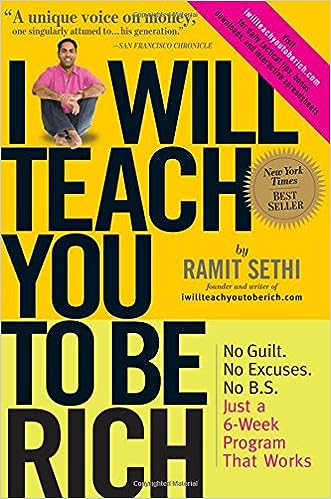
When they’re babies, they can get hurt very quickly, but you have to drop that habit at a certain point and trust that they’re okay. They have a lot of wisdom in them. Otherwise, we wouldn’t exist as a species. They can try to do dangerous things. It’s okay.
That one resonates with me a lot. Of course, it’s the first one. Another one that was the strongest was cleaning your room. Instead of trying to change the world, why don’t you take care of your own room and household first?
In any case, the How to Sell a Million Copies of Your Non-Fiction Book, I wrote this article about five years ago. Less than 0.003% of books published will ever sell a million copies. This will show you what it takes to be in that 0.003%.
I ranked them in order of importance of how you should tackle your book as you’re planning it out and thinking about this. Test number one is the most important. Is your book insanely valuable? Does it create 10 times more value for your readers than it produces for you?
This is one of those areas where it’s easy to fall into the trap of, how much value I will get from creating a book? What are all the things that I want to get? How is it going to change my life? You have to let that go.
You can think about it from the outset and be strategic about it. Let’s say you want to be a speaker, and you want your book to provide you with speaking gigs or give you a passport to get on stage. If your book’s any good, you’ll get speaking gigs 10 years after publishing it. It won’t instantly transform you; you’re doing 50 gigs yearly. That’s not happening unless it’s for the small subset of books that sell millions and millions of copies. Even with those people, they’re probably already speaking anyway.
Write a book that holds invaluable references and actionable steps. Keep people engaged and they will share your book with others. Share on XRight. It’s not necessarily correlated that you get many speaking gigs from selling many books. The corollary or the opposite is true as well. If you don’t sell many books, you can still get many speaking gigs from a book that may have sold fewer than a thousand copies.
Totally. If you wrote a book for associations, for instance, and they were like, “This is perfect. We want you to talk to us all over the country. That will get so many speaking gigs that your calendar will fall.”
This is a disclaimer that I put in the article. A lot of people want to sell a million copies. Many authors want to enhance their business, get leads, speak more, and elevate their credibility. You don’t need to sell a million copies if that’s your goal. That’s fine.
Wasn’t it an ego play? I want to be a million-copy bestseller. It’s like, “I want to be in the New York Times number one bestseller.” It’s a big ego thing.
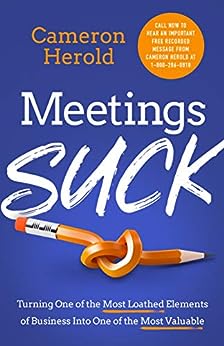
Totally. That’s fine. Just not going into it that this is what I’m ultimately doing. I’ve talked with numerous authors who are like, “Yeah, I’ve already won a business in many ways. This is my next mountain.” I know it’s a pure ego stroke. I get it. In those cases, it’s like, “Cool. Thank you for being honest and understanding. If you know that’s what it is, here’s your path.”
Your book has to be insanely valuable, and people could describe it as insanely valuable because The 4-Hour Workweek, Atomic Habits, meets those criteria exceptionally well. It won’t last long unless it’s so insanely valuable that people keep referencing it. They keep bringing it up.
That’s test number two. Will people talk about your book? There are a bunch of criteria there. It has to be a tip-of-the-tongue constant that they’re like, “I just keep finding myself talking about this book.”
Even a decade later. For example, with Tim Ferriss with The 4-Hour Workweek, precious content has changed many people’s lives, and concepts like lifestyle design are now part of the Lexicon.
Hundred percent. It was interesting. I don’t want to put words in Tim’s mouth, but this is what I remember him telling me at one point, which could be wrong. He said, “One of my goals with the book was, can I create a thousand millionaires?” And he has with that. When you put that very clearly, and Tim’s a very clear thinker, S-M-A-R-T goal around what the book transforms the reader into, that’s remarkable.
When you say S-M-A-R-T, you use the acronym—Specific, Measurable, Achievable or Attainable, Realistic, and Time-based.
Aim your book to be constantly a tip-of-the-tongue.
Will people talk about your book? Does it elevate their status? Do they feel confident whenever they talk about it? One of the hamstring things in my book, Play It Away: A Workaholic’s Cure for Anxiety, not a lot of people love to talk about anxiety.
It doesn’t make them look good.
I knew that would be a battle no matter what, so in Play It Away, I tried to make it palatable.
It’s like imposter syndrome for dummies. Nobody wants to say, “Hey, this is a great book; it’s life-changing.”
You’re not going to run to post it. What are the feelings? What is it evoking when somebody’s writing a post about it online? Are they like, “This is making me look so good,” or “Is this diminishing me somehow? Am I going to do this more than once? Probably not.”
All that stuff matters. The number one sub-question I asked about this is, “Is your title attention-grabbing, easy to remember, and fun to say out loud?” There’s this great book, and I still don’t know the title, but I recommend it semi-regularly. I recommend it called It’s Not All About Me half a dozen times a year. I can never remember it.
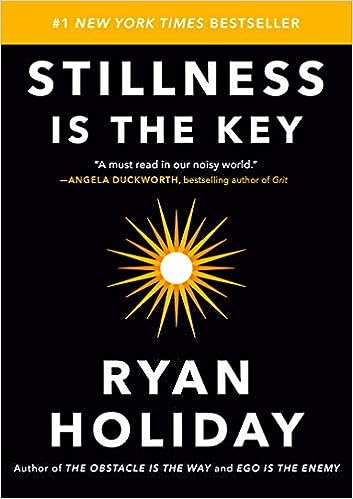
The cover is the worst I’ve ever seen, but it’s written by somebody from the CIA or FBI who wrote his book for his department on how he builds rapport so well that he flips people and turns them into their informants. The book is great. It’s short, and it’s got these really good tips in it. I can never remember the title of this book. I’ve never posted about it online, but I regularly recommend it.
It’s by Robin Dreeke. The cover looks like it was created in Microsoft Word. It’s just atrocious.
I see it now. That is atrocious. I think that is a clipart.
It’s like any government agency. I saw that type of art in the military. Not that I served, but I’ve been in military presentations, and they have no eye for design. They don’t care.
That’s funny.
Test three, does your book transform the reader? Are they a different person from implementing it? Is it effective at creating momentum and keeping them engaged, but also allowing them to stick with it so that they become the hero of their lives or their careers in some way, shape, or form?
Test number four is a bit harder. Is this the right book at the right time? Part of Mark Manson’s book, The Subtle Art of Not Giving A F***, for it selling tens of millions of copies. At this point, a big part of that was timing. It was coming to the forefront of Americans and global awareness.
Your book should transform a reader.
Social media is a real problem. Kids are caring too much about what others think. We don’t know when the end is in sight. Then he comes in with this unique, fresh, hip take on Buddhism and the art of only focusing on the few things that matter to you, letting go of everything else. It starts with that great contrarian story about Charles Bukowski in the book.
The right book at the right time, it’s difficult. Another great example is How to Change Your Mind by Michael Pollan. His book came out right as that wave started to crest around, “Hey, mental health solutions are terrible, and they’re not working.”
This new wave of psychedelics and alternative medicines is showing promising results. Whatever your take on that doesn’t matter. The reality is that the wave was cresting. He hit it right at the right time and established that this is the go-to book on this topic.
The same with books about Trump when he was at his height. Anybody with an inside perspective on Trump will explode in popularity, but they’ll fall off. This one makes a big difference, but it’s not necessarily one I think that’s worth shooting for because books are evergreen. They should be.
Will your book fit in with or create a cult following? Going back to my buddy James Clear’s book, Atomic Habits, he did a really good job of thinking about the cult groups that will identify strongly with this. He started with CrossFit groups.

Can your book be the Bible for a tight-knit group of people who are like, “This is the ultimate?” Stoicism is a good example of that as well. That wasn’t necessarily a tight-knit group, but there are a lot of enthusiasts about Roman history, philosophy, and stuff. They congregate online.
They talk about these principles. Some of them are super nerdy about it, much more than Ryan. They get caught up in the pedantic of different philosophies and everything. That’s the next test.
Test number six is, is buying and gifting your book a no-brainer? Can people find it, stop quickly, and impulse purchase it? Could it be given as a Christmas gift to somebody’s entire family? Could it be given as a corporate gift to hundreds of employees? Could it be a go-to gift for years and years to come for the types of people that you consistently run into?

I know Meditations by Marcus Aurelius has become this go-to gifting book for both Ryan and Tim. They’ve given hundreds and hundreds of copies of that book. A good example is Meetings Suck by Cameron Herold. The brilliance of that book was not “Here’s how to run a meeting.” It was also, “Here’s how to effectively attend a meeting.”
Suddenly, it became a book for everybody in the company, the same with books like Who Moved My Cheese. We’re going to be facing change. We need to communicate this effectively to everybody and do it with a simple parable, a nice story that they can go, “Now we’re on board with change.”
By the way, a great example of this is The Little Soul and the Sun. Anyone who is a parent would benefit by getting that book as a gift to read to their kid. It’s the book by Neale Donald Walsch. I recommended it to you, didn’t I?
Yeah, we have a copy. It’s the books that you can see people consistently buying and giving repeatedly.
By the way, this category of business parable is hot. The Who Moved My Cheese example is a business fable with animals acting out a story. Important business lessons are being conveyed, and a moral to the story. Is that still hot, or has that jumped the shark?
It will always be hot. The E-Myth is an example. It’s the same thing. Fish was a huge book a while back. In reality, all it’s doing is creating a hero’s journey within the structure of business advice, or we’re putting business advice into a hero’s journey. It’s always going to be “hot.” It’s just a matter of whether it is a good story.
Create a hero’s journey within the structure of business advice.
There are a few different ways of tackling business books. If your book forms a narrative with the flow of the chapters, you don’t necessarily have to say, “Here’s one story.” Most business books are made up of 20 stories. They’re little stories. The chapter starts with, “Here’s the story about Walt Disney.” Or “Here’s a story about Henry Ford,” and it moves to different ones to illustrate this broader point.
A fable includes animals in it to convey the story. A parable is just a story. Jesus always used parables to convey teaching points, but a fable uses animals to convey them.
I didn’t know that distinction. I didn’t know if fables were always animals.
Yeah, animals. Also, you can have plants or inanimate objects as the subjects or the characters.
No matter what structure you choose, you’re going to require stories. One of the biggest mistakes business authors make specifically is neglecting the story, neglecting a narrative, and just saying, “This is how to do the thing. This is how it works in my brain. I’m going to give people a manual.” All the studies have shown people don’t remember how to. They don’t remember information. A few weeks later, 10% are going to remember it. But if you bake it into a story, over 60% will remember it, so the story matters most.
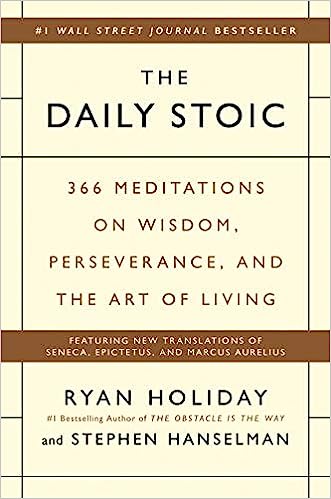
How do you bake into The Art of SEO storytelling? That’s hard.
Yeah, right. It’s a great question. In the chapter, especially the first chapter, you want to create a sense of strong desire or total fear because you must grab the reader. You can’t just say, “Wouldn’t it be nice to be number one on Google?” You must say, “I’ll never forget waking up to a thousand emails and being in total panic.”
There needs to be some sense of, “There’s something on the line, almost to the point where it feels like there could be a career death or an actual death here.” It’s a huge, terrifying thing. Or “I’ll never forget waking up to $200,000 in my account that had come in overnight without having to do anything.”
A good example is Alex Hormozi’s book, which has sold hundreds of thousands of copies. He just was self-published and has barely been promoted. His book is called $100M Offers. I read the first chapter and said, “Oh, I’ve been in a worse spot than that.”
No, let me take it back. I haven’t been in a worse spot than that. He had less than $1000 in his account to pay $100,000 worth of payroll or something. He was sitting in a theater, and he describes himself as completely unable to pay attention to the movie, like in a total state of panic. His wife is beside him, like, “Are you okay?” It feels like he’s going to die as you’re reading it.
It’s so important to grab your audience immediately in that first chapter of your book.
It’s so important in that first chapter to grab them. Having that type of a story is not optional. It’s required at the beginning. You have to because people are busy. They’re distracted.
Look at all these books on my shelf. I haven’t read all of them. I’ve read a lot of them, but I’ve picked up a number of them. If it doesn’t grab me fast enough, you know, that’s the reality. We’re competing with everything on the planet, and TikTok is very entertaining, so is YouTube, so is real life, nature, etc.
Where does a book like Meditations by Marcus Aurelius grab you with a hair-raising story like that?
It’s a great question. It is his background and the context of that book that gives it the weight that it does. If it did not have Marcus Aurelius as the author, if it had a mid manager at a local accounting firm who is making $60,000 a year, that book doesn’t do anything, even if it’s filled with the greatest wisdom. It made it remarkable because Marcus Aurelius was writing letters to himself with no intention of ever sharing or publishing them to the world.
It has a story to it. The very act of recommending it requires a story. That’s pretty remarkable, and it’s the same with Goggins. This book is written by the world’s toughest man, ex-Navy Seal, retired Navy Seal, who went through hell week multiple times. You just find yourself vomiting out the story of David Goggins. You can’t help yourself but sell the book.

How would you describe Marcus Aurelius to somebody who hasn’t heard of him?
This is where I desperately want a lifeline and say, “I’d like to call Ryan Holiday. He does a much better job at selling Marcus Aurelius.”
But you’re a reader. You’re not the author. We’re not having the author retell the story. We have the reader. It’s got to be you.
Marcus Aurelius was considered one of the greatest leaders of all time.
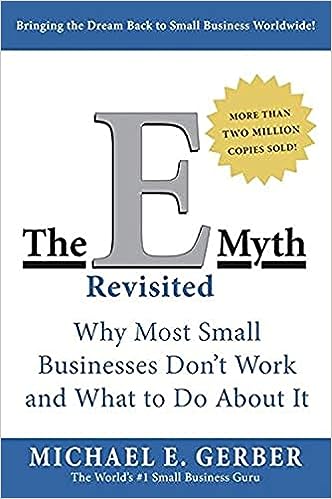
A Roman Emperor.
Yes. This is where I will lean on you, Stephan, because I am not a self-identified stoic. This was always a weird point.
Me neither. I haven’t read the book. I haven’t read Ego is the Enemy and The Obstacle Is the Way. What are some of the other Ryan Holiday stoicism books?
He did Stillness is the Key and The Daily Stoic.
I haven’t read any of them. I haven’t read Meditations by Marcus Aurelius. I certainly feel a connection with Marcus Aurelius. He’s up there in the heavens guiding me, among others, but I don’t have any real-world exposure to him from readings, teachings, YouTube videos, or anything.
I didn’t feel a strong connection with him too.
Not that I feel a strong connection to him. Even though I haven’t had any real-world exposure to him from his works, I need to. That’s on my list of things I’m being guided to do. I recently learned that Caesar, or the Roman emperor, saved Judaism. His best friend was Rabbi Yehuda HaNasi.
Anyway, that was his best friend, and that was a big deal for somebody as powerful as him in the Roman Empire to have a Jewish rabbi and a time when the Romans were just on the brink of obliterating all Jews. Here, he has his best friend as a righteous and elevated rabbi. That’s one thing that just stuck out for me.
This doesn’t feel like just a name that has stuck with me for years. Marcus Aurelius, I’m not sure why, but there’s a purpose here. There’s a reason I feel that kinship. I feel like he’s somebody that maybe I knew from past lives. He’s like one of my guides or something.
No matter what structure you choose, you’re going to require stories.
I am not as familiar with his teachings. I think I read Meditations in 2009. It’s been a long time. I don’t follow stoicism. It’s never resonated with me as hard, but it resonates with many people, where if you get emotionally turbulent, there are huge repercussions. There’s a lot at stake.
Being able to remain within a certain range to do your job and live your life on a steady, even keel and stay disciplined, those are the folks that I’ve seen really gravitate to it and do well with the materials.
There’s another great book by a great leader. I think the book is called Xenophon’s Cyrus the Great: The Arts of Leadership and War, and it’s about Cyrus the Great, who was also widely considered to be one of the greatest leaders of all time because he would conquer nations but made them better when he conquered them. He was beloved.
That book is fascinating; it breaks down like, “Here’s how he led.” I don’t know why that book didn’t take off as much. There’s more of a story with Marcus Aurelius. I also think there may be some xenophobic undertones that Americans might not gravitate as much to a Persian leader as they would to Marcus Aurelius. That book is great, too.
There are two final tests. Test number eight is, will you successfully market your book? Some books have sold millions of copies that didn’t have a launch, that wasn’t super well-marketed, but the marketing was baked so well into the book that it could market itself. They had so many things going for it that it did well.
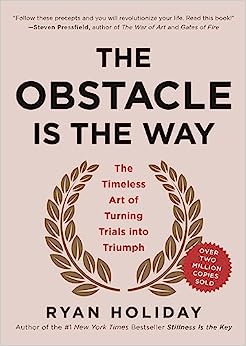
The most impressive accomplishment I’ve ever seen in book marketing is Gary Vaynerchuk selling a million copies of his book in 24 hours, like breaking the three-minute mile. Every author who follows that stuff is like, “What? It just didn’t make sense.”
The way he did it was really smart, which is like the next test, will your book get massive distribution? Is there another product you can package your book with which millions of people desperately want or need to buy? What he did was he didn’t sell the book. He sold NFTs. He packaged his book and multiple copies with his book if you purchase the NFT and then funnel the sales through whatever needed to be done.
Those are the nine tests. You don’t need to check off all of them. I’m sure other ones are missing, but over the years of studying best-selling authors, and books that sell millions of copies, I’ve just seen those come up repeatedly. That’s my list.
That’s awesome. We could end with some wisdom nugget that we haven’t already discussed.
I’ll share one thing that popped up when I looked at your article as we talked. “Getting on Joe Rogan is not a strategy.” I love that so much. Maybe briefly riff on that for a minute, and then let’s go to that wisdom nugget you want to leave our listener with.
Some books have sold millions of copies that didn’t have a launch because the marketing was baked so well into the book that it could market itself.
Yeah, all right. A lot of people are delusional. It’s one thing to have big goals, do the work necessary, and strategically achieve them. You could get on Joe Rogan if you are the type that fits the kind he wants to invite onto his show. If you’ve done interesting things to him, absolutely you can. But understand that press typically will not move that many copies. It just doesn’t work that way anymore.
There are instances, yes, but it’s rare. I have had friends beyond Oprah’s Super Soul Sunday and sold less than a thousand copies of their book. Friends who’ve been on Good Morning America sold less than 10 copies. Steve Harvey Show, less than 10 copies.
Don’t look, “These outlets will move the books for me.” It doesn’t work that way. The one I’ve seen move a ton was Joe Rogan for David Goggins because it was a perfect intersection of the right audience.
But most importantly, Joe Rogan starts the show and, in the first 30 seconds, gives the book the best possible endorsement you can imagine. He’s like, “David Goggins, your book is effing awesome. It has been my running partner for the last week. It is effing amazing, man.” He almost says that verbatim.
To start a show with that is like, “Okay, Joe Rogan just sold his entire audience, buy that book.” That’s a wonderful endorsement. He’s not going to do that for you. If you get on his show, you’d be lucky if he starts the show, saying, “Hey, welcome to the show. I’m so glad to have you. You’ve written a book—” You’re lucky if he acknowledges you’re an author.
Not many outlets have that big of a following. I have seen TikTok move a lot of books, but that’s another game to play in and of itself. It’s got to be effective without context immediately. It’s got to be a story. It’s got to feel organic. It can’t feel promotional at all.
I saw a teenager. She made a video about her dad, and he has no idea she’s filming him. Maybe he didn’t, but she’s like, “My dad has worked so hard on this book. He’s such a sweet guy. I love him so much. He came out with this book.”
It’s this self-published book, and her dad looks like this quirky, sweet guy. He’s completely oblivious that she’s doing anything. He just looks like a pleasant person.
People love that video. They thought it was so sweet. The book hit number one on Amazon overall. It sold tens of thousands of copies.
Back in the day, I had a friend named Geneen Roth. I know her husband, Matt Weinstein. He told me this great story. She went on Oprah for the first time. She had just come out with a book.
Many authors want to enhance their business, get leads, speak on a public stage, and elevate their credibility. You don't need to sell a million copies to achieve these goals. Share on XI can’t remember what the book was. Oprah showed the book and talked about how much she loved it, and the show producer turned to her and said, “You can go ahead and buy a new car now. Oprah said, “I love this book so much. I’m giving it to everyone in the audience.” The audience shared, and he turned to him and said, “You can go ahead and buy that second home you wanted.”
At that time, Oprah could call a publisher and say, “If you don’t have 800,000 copies of this book in print ready to go, you will lose money.” They would be like, “Okay, Oprah,” and print off 800,000 copies of the book. That was her influence. It’s gone. There are so many media channels now. I know that was a long answer.
When it comes to marketing, the best move you can make is to create the greatest product that you can, the best product that you possibly can, and have it be something that meets as many criteria as we discussed. Just do your best to engineer it as a product that bursts with those qualities.
A launch is great. You’ll want to do a launch. I’ve talked to hundreds of authors. It’s very easy for them to stress about it. It’s easy for them to feel like a failure immediately after because my book dropped off its best-seller subcategory. I only got 40 reviews.
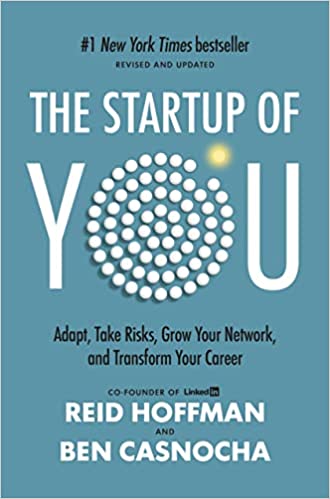
People aren’t buying it because now it’s week two or three. I need to sell more copies, and it’s like, “Let it go, man. You just put something into humanity’s consciousness. What an accomplishment. That book is a seed. Treat it like the baby it is, and let it go.” It’s going to grow up. It will take roots and society into people’s minds and lives in ways you can never plan for or imagine.
The ripple effect is huge. It’s more than we could imagine. Just that kind word, the smile, the helping a little old lady across the street. These things seem small, but they ripple out across universes.
Absolutely. I got a message from a guy who I’ve talked to twice. I got a two-minute video message this weekend from him thanking me. He’s like, “I listened to Play It Away, and it’s exactly what I went through. I just want to thank you. I’m playing with Legos again, playing piano, caring for myself, and getting off the stimulants. I couldn’t thank you enough.”
It was as though, “I experienced that 11 years ago. I have no resonance with that experience because that was what I went through.” But it’s fresh for people, and that’s what I want to illustrate. You’re creating a timeless artifact. Take the time to make it as great as you can. Take that time, but don’t worry about it after you release it. Just move on to the next one. Set up systems that market it.
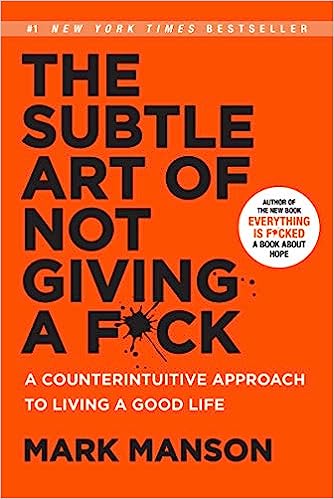
That’s what I did with my books. I tried to set up systems that would take care of it for decades. I just let it go and move on to the next thing. Don’t worry about selling copies. Give away copies. Act like it’s seeds for trees, and you’re planning a forest like it’s cheap. It’s the best content marketing you could view.
If your publisher says you can’t do that, you’re stuck.
Exactly. It gets cost prohibitive. Treat that thing as though you can just chuck it out and do so. It’s a wonderful gift.
There’s an expression, I forget where it comes from, but information wants to be free. I love that.
That sounds like Linus Torvalds or someone who works on open-source stuff.
This was fabulous. I love this conversation. If our listener wanted to learn more from you, perhaps even work with you on a marketing strategy for their book, or to help them to up-level some fashion in their personal brand or their marketing if you even have room and you’re scheduled to take on any clients, how would they get in touch?
Studies have shown that if you share your personal experiences in your book, 60% of your audience will absorb what you write. Your story matters. Share on XYeah, I appreciate it. Just charliehoehn.com. There’s a contact form. My email is listed there, [email protected]. Reach out and say hi, and we can talk.
Awesome. Thank you, Charlie. It’s been a pleasure.
Thank you, Stephan.
Keep revealing the light you do on the world, and the same to your listener. Get out there, and make it a beautiful week and life for everyone. We’ll catch you in the next episode. I’m your host, Stephan Spencer, signing off.
Important Links
Connect with Charlie Hoehn
Apps and Tools
Articles/Newsletters
Books
Businesses/Organizations
Films
People
Previous Marketing Speak Episodes
Previous Get Yourself Optimized Episodes
YouTube Videos
Your Checklist of Actions to Take










About Charlie Hoehn
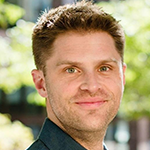 Charlie Hoehn is the best-selling author of Play It Away, which Tony Robbins called “The cure to your stress!” His articles on play have been read by over 5 million people.
Charlie Hoehn is the best-selling author of Play It Away, which Tony Robbins called “The cure to your stress!” His articles on play have been read by over 5 million people.







Leave a Reply